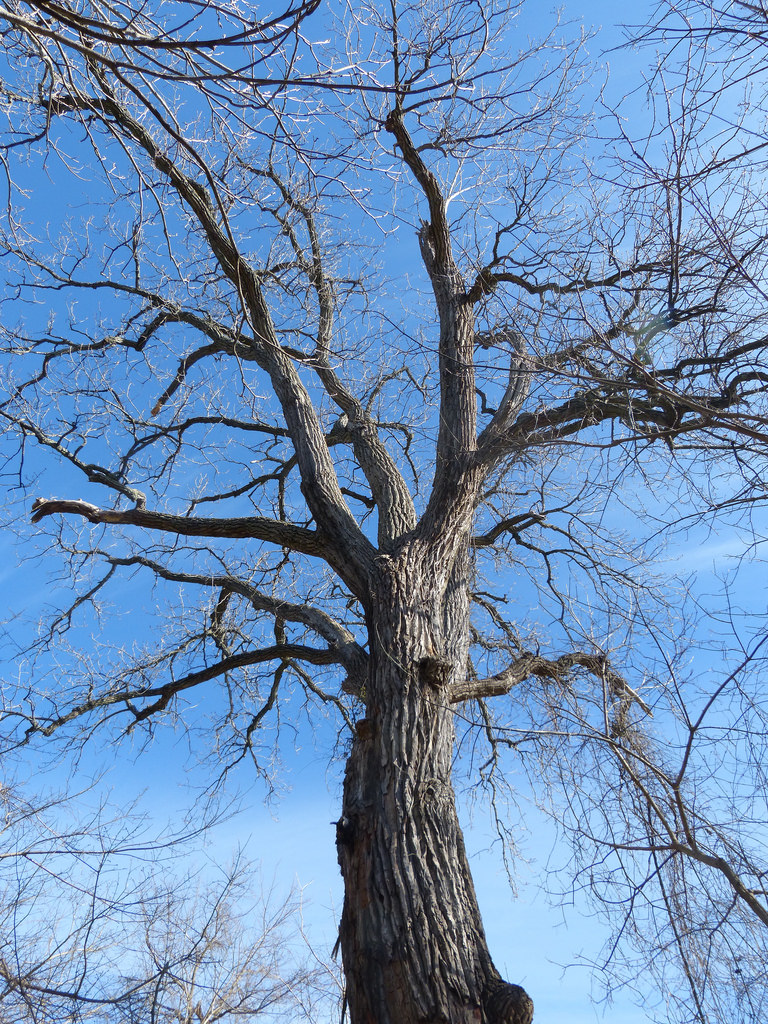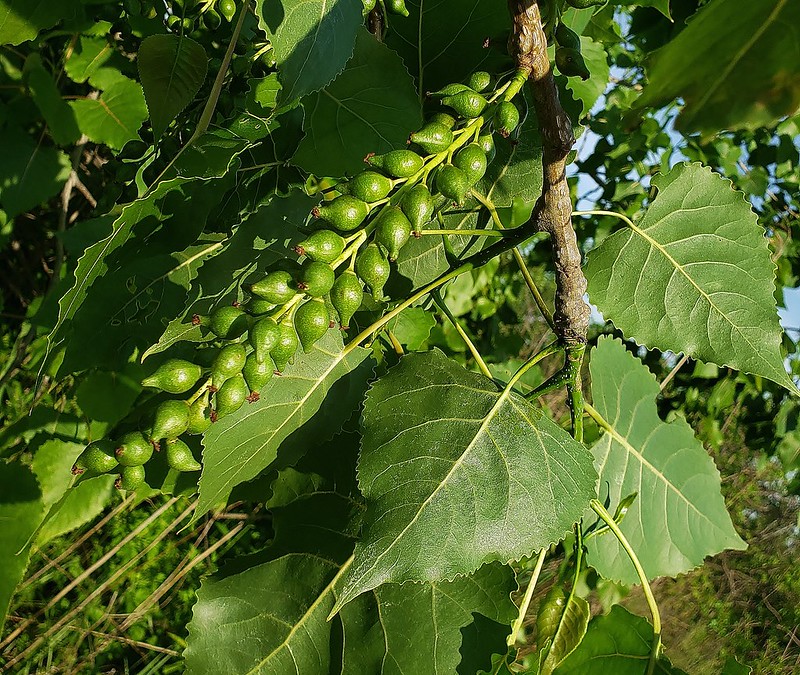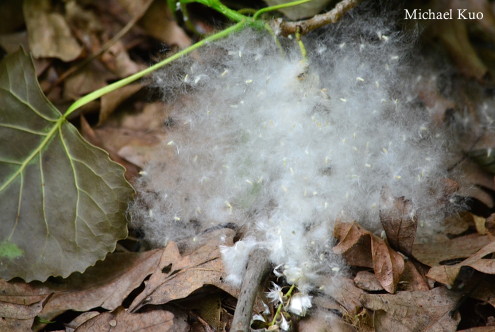Eastern Cottonwood
Populus deltoides W. Bartram ex Marshall
Description
Eastern cottonwood has several alternative common names: cottonwood, common cottonwood, poplar and Eastern poplar. It is a member of the willow family (Salicaceae) and can attain heights of 100 feet. ¹ It is fast growing. bit relatively short lived. ¹ Young bark is ash-gray but becomes deeply furrowed and dark when mature. It has gummy end buds, which distinguish it from other poplars. The leaves are triangular, 3 to 6 inches long with sharply serrated margins. ¹ The base of the leaf has 2 to 3 glands. ³ The petiole is strongly flattened, which causes the leaves to flutter in a breeze. Flowers are dioecious with male and female flowers on separate trees in early spring. ² Male inflorescences are 3 to 5 inches long. ² Female inflorescences are 6 to 12 inches long with green flowers and fruits. ² They are wind pollinated. The seeds have silky white hairs resembling cotton. ¹

Bark of eastern cottonwood. Maryland Biodiversity Project, J. Brighton ³

Leaves and fruit of eastern cottonwood. Maryland Biodiversity Project, M. Breziat ³

Cottony seeds of eastern cottonwood. @M. Kuo 4
Distribution
Eastern cottonwood ranges from southern Quebec to Montana and south to Texas and the southeast. ² It is primarily a bottomland species on sandy or gravel soils. ² In Maryland it is common along the Potomac River drainage system and is scattered elsewhere. ³

Distribution of eastern cottonwood. Wikimedia 5
Wildlife Importance
Eastern cottonwood is host to several moth including the Cottonwood Twig Borer Moth, American Dagger Moth and Common Guphisia Moth. ³
Economic Importance
The wood of eastern cottonwood is soft with little value for structural timber, however it is used for pulp to make high grade paper. 6 It is planted for that purpose. ²
Threats
Eastern cottonwood is highly susceptible to fire both as saplings and mature trees. ² There are numerous boring insects that affect the tree. ²
Interesting Facts
- While the masses of cottony seeds makes the tree undesirable in horticulture, some plantings include only the male trees which produces no seeds. ²
- Eastern cottonwood can grow up to 6 feet a year. 6
- Eastern cottonwood produces oils used in lip balms. 6
References
- North Carolina Extension–Populus deltoides
- USDA Forest Service Silvics, Vol. 2: hardwoods–Populus deltoides
- Maryland Biodiversity Project–Eastern Cottonwood
- Midwesternnaturalist.com–Populus deltoides
- Wikimedia–Populus deltoides range map
- Kiddy: 24 Eastern Cottonwood Tree Facts You Have Not Read Before
Contributed by J. Hull
Towson University Glen Arboretum
